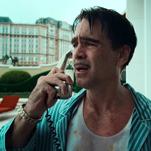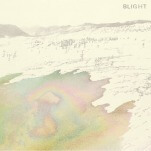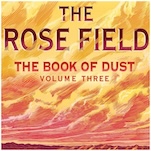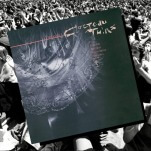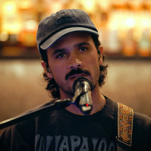10 Thrilling Imaginary Island Novels
Remote, imaginary islands have no doubt been the settings for stories ever since people first set out to sea; Homer famously stranded Odysseus on such enchanting isles as Calypso’s Ogygia, and Circe’s Aeaea. Island stories became particularly popular during the European Age of Discovery, with a substantial number, including The Tempest, partly inspired by the experiences of actual survivors. And ever since Robinson Crusoe, these stories have replicated wildly, like the rabbits set loose on Dr. Moreau’s island were supposed to do. In chronological order:
1. Robinson Crusoe (1719) – Daniel Defoe
One of the first English novels, Robinson Crusoe was the forerunner of a raft-load of adult castaway stories as well as Swiss Family Robinson, Gilligan’s Island and Space Family Robinson. The book itself was probably inspired by the experiences of Alexander Selkirk, a Scotsman who was stranded on a Pacific island for more than four years, 24 fewer years than this story’s hero. Ever resourceful, Crusoe uses the ruined ship’s supplies and the island’s wildlife to survive and prosper somewhere off the east coast of South America. With the help of a Bible he never bothered with before, he learns to be grateful for being cured of his wicked ways. Crusoe’s idyllic years with Friday, the “savage” he saves from visiting cannibals, have been fodder for their own raft-load of revisionist retellings.
2. The Mysterious Island (1874) – Jules Verne
Jules Verne wrote other castaway stories, but this one featured a balloon wreck as well as impressive displays of human survival skills, tons of ecological details, and a diverting plot. Set during the American Civil War, five Northern prisoners of war steal away by air. After being aloft for five days, they crash-land on this volcanic island in the South Pacific Ocean and come across multiple mysteries. Not least of these was the presence of Captain Nemo, made internationally famous by 10,000 Leagues Under the Sea. In 2002, two separate new translations were published; both are gripping, if lengthy, adventures and come complete with the original illustrations.
3. The Island of Dr. Moreau (1896) – H.G. Wells
Set on a secluded island in the Pacific, Wells’ self-proclaimed “exercise in youthful blasphemy” continues to be unnerving, despite the two bad movies based on the tale and its loony premise. (As Margaret Atwood has put it—SPOILER ALERT— “no man ever did or ever will turn animals into human beings by cutting them up and sewing them together again.”) Dropping the reader into a lurid nightmare, Wells chillingly captures Dr. Moreau’s cruel scientific mind, the confusion and eventual soul-sickness of the narrator Prendick, and the wretchedness of Moreau’s tormented creatures. Atwood rightly calls the island “a little colonial enclave of the most hellish sort.”
4. Angel Island (1914) – Inez Haynes Gillmore
Five shipwrecked men discover the island’s only other inhabitants to be beautiful, winged women. Another wild premise but, as Ursula K. Le Guin wrote in her introduction to its 1988 reissue, it is also “satiric, funny, fanciful, and a good read.” In suffragette Gillmore’s novel, the men soon capture the women, and allegorical fun ensues, involving clipped wings, lost freedom, and a daughter who can fly. Angel Island may also have inspired Charlotte Perkins Gilman’s Herland (1915) about a utopian society made up entirely of women.
-

-

-

-

-

-

-

-

-

-

-

-

-

-

-

-

-

-

-

-

-

-

-

-

-

-

-

-

-

-

-

-

-

-

-

-

-

-

-

-


